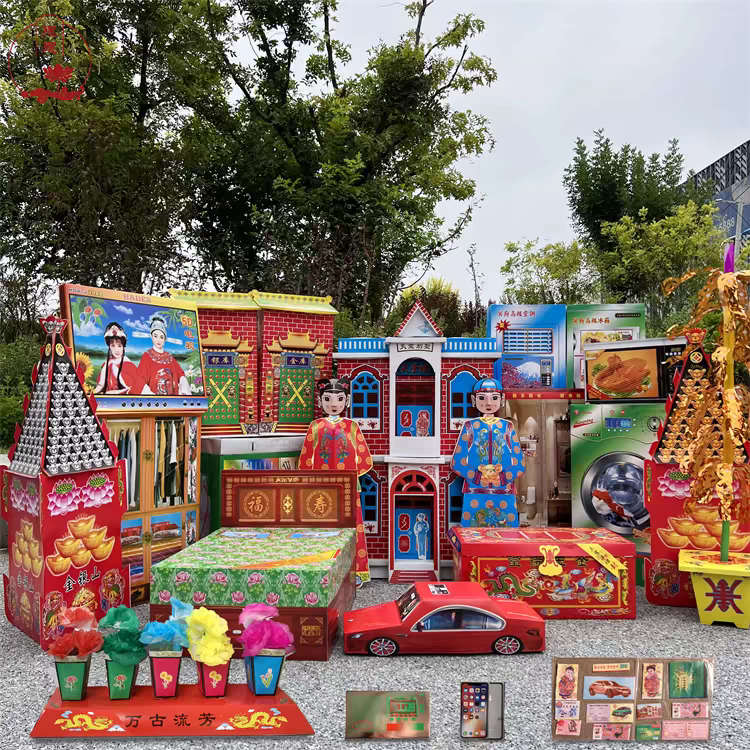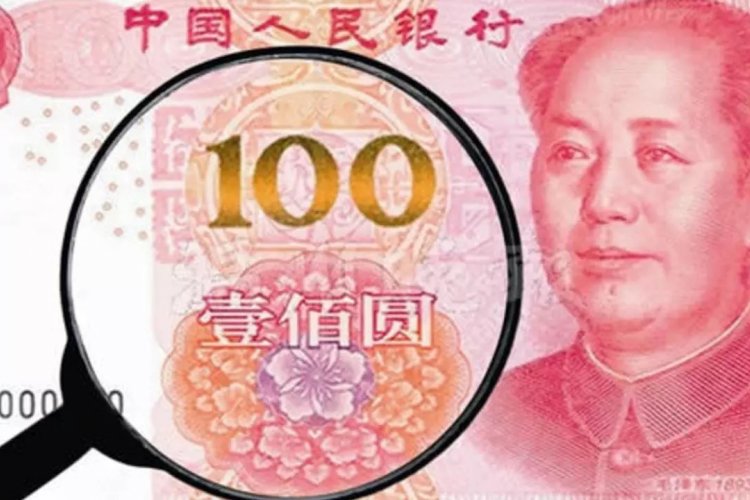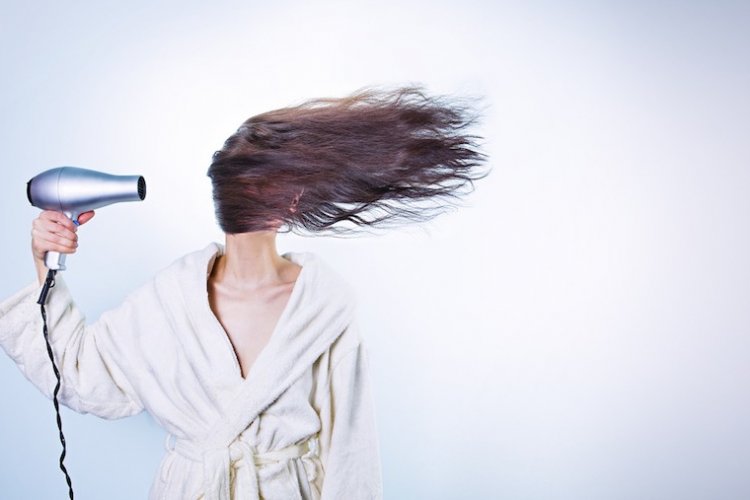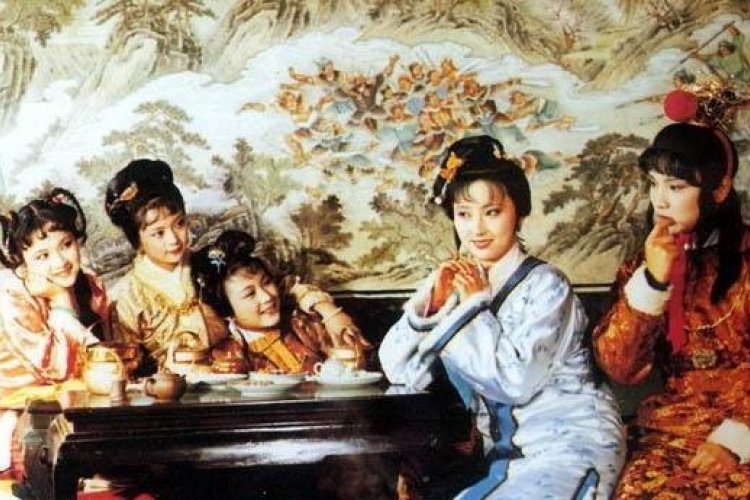Mandarin Monday: Exploring Chinese Festival Handicrafts
Mandarin Monday is a regular series where we help you improve your Chinese by detailing fun and practical phrases and characters.
In China, a land with a millennia-old civilization, you can find tradition breathing through the rhythm of everyday life. Among the most vivid expressions of its cultural heritage are the handicrafts (手工艺 shǒugōngyì) associated with traditional festivals. These intricate creations are more than just art; they are vessels of memory, symbols of cultural identity and bridges between generations.
Chinese New Year 春节 Chūnjié

During the Chinese New Year, streets and homes come alive with red, the color of luck and happiness. One of the most iconic handicrafts during this time is the paper cutting, often shaped into symbols like fish (for abundance) or the character “福” (fú) for good luck. In Chinese culture, fish symbolize abundance and prosperity. The phrase “年年有余” (nián nián yǒu yú) means “may you have surplus year after year.” Since “鱼” (yú) sounds like “余” (yú), meaning surplus, fish are commonly used in Chinese New Year decorations to express this blessing. These delicate designs, usually displayed on windows, are made by folding and cutting red paper with astonishing precision. Every cut tells a story, echoing wishes for prosperity, health and reunion.
Key Words:
- Paper cutting: 剪纸 jiǎnzhǐ
- “Blessing” symbol of good luck: 福 fú
- Window paper cuts: 窗花 chuānghuā
- May you have surplus year after year: 年年有余 nián nián yǒu yú
Lantern Festival 元宵节 Yuánxiāojié

Equally charming are the lanterns of the Lantern Festival, which marks the end of the New Year celebrations. Lanterns range from simple red spheres to elaborate figures of dragons, flowers and mythological creatures. Handcrafted from bamboo frames and colorful silk or paper, these glowing artworks are released into the night or carried in parades, illuminating not only the streets but also the hopes of those who make and carry them. The craftsmanship behind each lantern embodies patience, creativity and the joy of communal celebration.
Key Words:
- Lantern: 灯笼 dēnglong
- Decorative lantern: 花灯 huādēng
- Bamboo frame: 竹架 zhújià
- Silk: 丝绸 sīchóu
- Red paper: 红纸 hóngzhǐ
- Candle (used in lanterns): 蜡烛 làzhú
Qingming Festival 清明节 Qīngmíngjié

In early April, during the Qingming Festival, people honor their ancestors by sweeping tombs and offering handmade tributes. Some families create miniature paper replicas of items such as clothing, money or even modern gadgets, which are then respectfully burned as symbolic offerings to the departed. Though these items are ephemeral, the care with which they are made reflects deep filial piety and the reverence of tradition.
Key Words:
- Miniature paper offerings: 纸扎 zhǐzhā
- Ritual offerings: 祭品 jìpǐn
- Ancestors: 祖先 zǔxiān
- Tomb sweeping: 扫墓 sǎomù
Dragon Boat Festival 端午节 Duānwǔjié

Another beloved tradition lies in the Dragon Boat Festival, celebrated in early summer to commemorate the poet Qu Yuan. In addition to the thrilling boat races, families make and exchange fragrant sachets. These small, embroidered pouches are filled with aromatic herbs like mugwort and calamus, believed to ward off evil spirits and diseases. Each sachet, stitched by hand and often passed from mother to child, is a delicate expression of love, protection and artistry.
Key Words:
- Fragrant sachet: 香囊 xiāngnáng
- Mugwort (herb for sachets): 艾草 àicǎo
- Calamus (protective herb): 菖蒲 chāngpú
- Ward off evil spirits: 驱邪 qūxié
Mid-Autumn Festival 中秋节 Zhōngqiūjié

As autumn arrives, the Mid-Autumn Festival paints the night sky with moonlight and stories of reunion. While mooncakes dominate the culinary landscape, many families, especially those with young children, engage in making rabbit lanterns and clay figurines representing Chang'e, the moon goddess. These handcrafted symbols evoke not only the legends passed down through generations but also the enduring sense of wonder that such tales inspire.
Key Words:
- Mooncakes: 月饼 yuèbǐng
- Rabbit lantern: 兔子灯 tùzi dēng
- Clay figurine: 泥塑 nísù
- Chang'e the Moon Goddess: 嫦娥 cháng'é
- Moonlight: 月光 yuèguāng
- Family reunion: 团圆 tuányuán
What makes Chinese festival handicrafts so profoundly beautiful is not merely their visual appeal but also the emotions and values woven into each creation. These crafts serve as threads connecting the present to the past – the threads spun by the hands of grandparents, taught to children and preserved through ritual. In a world that moves increasingly fast, such handcrafts offer moments of stillness, reflection and continuity.
In essence, the handicrafts of China's traditional festivals are more than seasonal decorations. They are artistic expressions of identity, timeless gestures of love and remembrance, and sacred echoes of a civilization that finds beauty in meaning and meaning in beauty. In every fold of paper, in every stitch of thread, the heart of a culture quietly beats.
READ: Exploring Shadow Puppetry: A Timeless Chinese Art
Images: Canva, FreePik, Taobao







